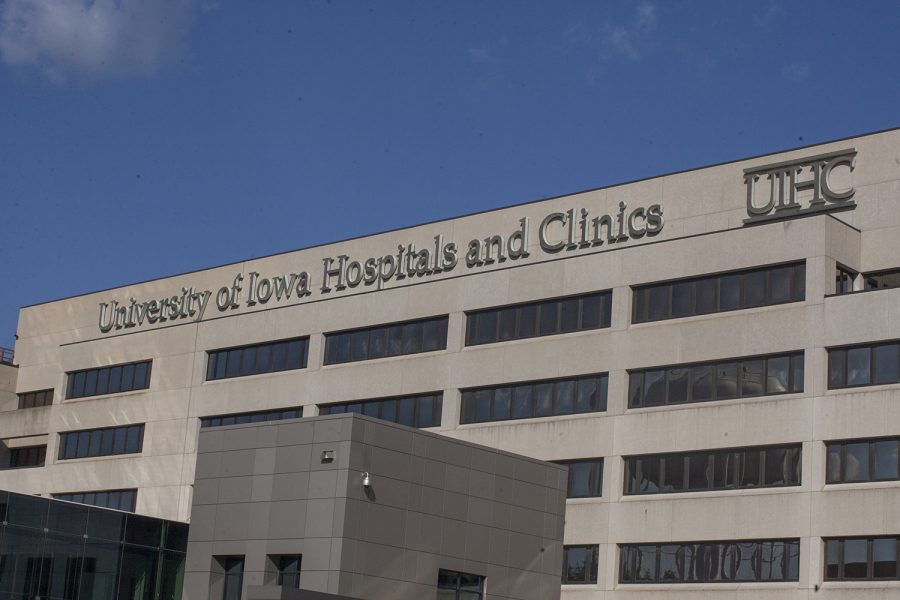Crisis Stabilization Unit decreases waiting times, improves efficiency of care
Since its opening in October 2018, the Crisis Stabilization Unit at the University of Iowa Hospitals & Clinics has improved waiting times for patients and reduced how many need to be admitted to the hospital.
University of Iowa Hospitals and Clinics as seen on Sept 17, 2018.
April 23, 2019
With shorter waiting periods, an increased likelihood of patient discharge in 24 hours or fewer, and plans to increase access to follow-up care for discharged patients, the new Crisis Stabilization Unit has changed how the University of Iowa Hospitals & Clinics provides mental-health care.
Before the the unit began offering its services in October 2018, psychiatric-health professionals had only two options for their patients: to either immediately discharge them from or admit them to the hospital. Levi Kannedy, administrator for the Emergency Department, having the unit act as a third option has allowed health-care professionals to create a more effective treatment plan for each patient.
“Sometimes a crisis is over in eight to 24 hours, but when your only tool was to admit someone, [patients] would need to stay here a little bit longer,” Kannedy said. “The [unit] is really a third option, to treat and observe, and then make a decision with a patient.”
Taylor Ford, the assistant clinical director and social worker for the unit, said the quicker patients in crisis see a medical professional, the better. The hospital’s patient-centered approach to care often makes all the difference to ensuring a patient’s well-being before designing the right treatment plan for them, she said.
“If we’re intervening earlier, we’re able to get them out of crisis sooner,” she said. “A lot of times, we’re just trying to meet basic needs first. We’re offering a warm blanket, making sure they’ve had a hot meal. We’re finding that sometimes just removing people from the stressful environment in itself can be a really powerful intervention.”
Since the unit’s opening, the waiting time for patients to receive intensive psychiatric care has declined by 80 percent, changing dramatically from up to 30 hours spent in the emergency room to only four hours on average, Ford said.
“They still have to wait longer than we’d like, but folks come here and get an evaluation much quicker than they did before,” said Clinical Professor Jodi Tate, the medical director of the unit.
RELATED: New UIHC will take burden off of emergency room
Because of the number of incoming patients, the unit has had to double its staff on duty at any given time since October, Ford said.
“We started with high staff-patient ratios, just like the model, but we’ve found that we’ve increased over time,” she said.
Because the unit provides a safe environment in which patients in crisis can be treated, observed, and evaluated over a 24-hour period, only 25 percent of patients end up being admitted to the hospital, Ford said.
The unit also provides a place for patients in crisis to receive specialized care outside of the main ER, allowing for new patients to be seen more quickly.
“Now that psychiatric patients are able to go to the [unit], we’re able to treat more patients that we weren’t able to treat previously,” Kannedy said.
Despite its successes, Ford said, there is still room for improvement. One issue the hospital would like to address in the future is offering post-discharge services to reduce patient readmissions.
A post-discharge walk-in clinic is set to open in the end of May or early June, Ford said. Discharged patients will be able to come in at any time within seven to 10 days of their discharge date to get direct access to follow-up care.







